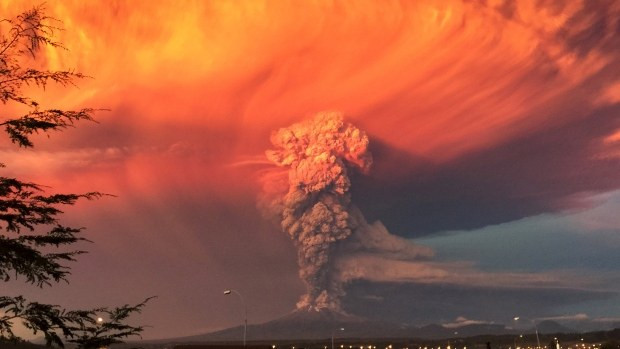Massive volcanic eruptions and atmospheric oxygen 'can narrow down hunt for alien life'

Volcanic activity could be a good indicator of habitability of exoplanets, suggests a study, and goes on to say detection of both volcanism and oxygen could further point to life.
University of Washington graduates have found a way to detect such volcanic activity in the atmospheres of exoplanets during transit in front of their host stars.
This could aid the process of choosing from millions of those worlds that could be inhabited.
The study began with a way to check for plate tectonics on distant lands with the mechanism believed to contribute to life by virtue of the material recycling between planetary depths and the atmosphere.
Volcanic outgassing through the plate edges helps a planet maintain moderate temperatures, and regulate the atmosphere by cycling gases such as carbon dioxide between the atmosphere and the mantle.
"I came up with the idea of looking at explosive volcanic eruptions as a proxy, or stand-in, for plate tectonics," said Amit Misra, the lead author. "I had done some work modelling aerosols produced by volcanic eruptions for other projects, so I started looking into how we might detect an eruption and what it would tell us."
The team used data from volcanic eruptions on Earth to predict what an Earth-like exoplanet might look like during such eruptions.
Misra agrees that the connection between volcanic eruptions and tectonic plates seen on Earth may not be the same throughout the cosmos.
However, an explosive eruption can probably be tied to volcanism if dust storms and other causes can be ruled out.
Unlike smaller volcanic events, the more explosive eruptions can send volcanic gases up into the stratosphere, where they influence the spectrum of the planet by virtue of the chemicals in the explosion.
"These long-lasting, high-up aerosols can have a huge signal for an exoplanet, which is the key result for the paper," Misra said.
"What this means is that if we can detect a volcanic eruption on a planet, and if it meets other criteria like being in the habitable zone, that planet should move up our list of potential targets to search for life."
The optical signature of the gases might be detectable by powerful telescopes such as the James Webb Space Telescope, scheduled for launch in 2018.
While oxygen is thought an indicator of life, oxygen can also to be produced abiotically. Volcanism, Misra said, may help distinguish between oxygen that is produced by life or other planetary processes by helping astronomers better understand the planet's environment.
"Volcanic gases often react with and destroy oxygen, and a detection of both oxygen and volcanism suggests that there is a source of oxygen in the planetary environment, which could be life," Misra said.
Their findings are published in the June issue of the journal Astrobiology.
© Copyright IBTimes 2025. All rights reserved.





















